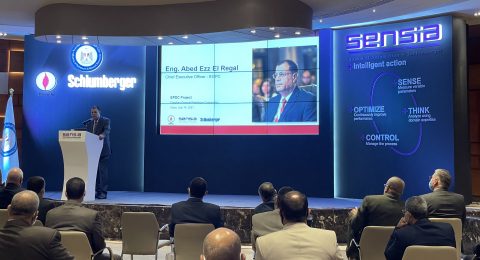Deepwater and ultra-deepwater operations are now a core part of the business for many installation contractors. They rely heavily on Remotely Operated Vehicles (ROVs), lifting equipment and running tools for the deployment, maintenance and repair of deepwater production infrastructure. Additionally, umbilical, riser and flowline installations at depths up to 9,000 feet present huge technical and logistical challenges.
Strict offshore oil and gas industry regulations govern the increasingly complex and costly designs necessary to exploit new deepwater fields and to extend the lives of existing ones. Traditional full-scale Site Integration Testing (SIT) is becoming less palatable due to high mobilization costs, short project design cycles and restricted weather windows. Instead, the industry is learning that investment in simulators to conduct virtual SITs provides significant and tangible gains before implementation.
This is possible because the well-proven physics modeling enables complex solutions to be tested in a virtual world first, thus substantially reducing the need for testing in the real world. This means deployment outcomes can be predicted earlier and offshore implementation requires less contingency, which leads to more cost effective use of vessels.
The leading European producer of ROV simulators is Fugro Subsea Services Limited, whose Robotic Technologies division produces DeepWorks: an overall solution for subsea simulation with a range of products for ROV training, engineering, and live operations visualization.
The DeepWorks ROV pilot training simulator introduces true physics-based simulation to subsea scenarios so that remotely operated vehicles and other moveable subsea assets respond to driven force demands, environmental forces, and impact forces and friction just like in real life. Accurately modeled thrusters, manipulators and winches, operated through real control interfaces offers pilots the same interactive experience as if they were actually navigating the ROV, deploying a manipulator tool or installing a subsea umbilical for real.
For engineering design validation, access studies and clash checks, DeepWorks Engineer provides a powerful desktop simulation suite that enables engineers to model the true hydrodynamic responses of submerged equipment to user-defined force inputs or environmental conditions. Using the user-friendly drag and drop interface, engineers can configure their own scenarios from a comprehensive library of pre-defined components like vessels, pipes, cables and ROVs and customize their physical properties to tailor these configurations to their specific project needs. External 3D CAD drawings can be easily prepared and imported into the customer’s own model library within DeepWorks.
By adding a real-time module to DeepWorks Engineer, live monitoring of the topside and subsea operations is possible. Real-time data collected from subsea sensors and from ship systems is used to generate a live visualization. Full distribution to monitors around the vessel enables all the people involved (pilots, crane operators, surveyors, superintendents and deck handling teams) to see subsea operations as they unfold. This makes operations co-ordination much easier to manage and leads to more efficient and safer work practices. DeepWorks Engineer Live accepts inputs from Fugro Starfix, and NMEA Standard inputs such as GPS, Gyro and USBL data. Additionally, the software can combine real sensor data such as vessel position with predicted data such as cable position in the water-column. This kind of augmented reality means it is no longer necessary to rely solely on having an eyeball ROV in the water in close proximity during a lay-down or pull-in operation.
“Sea trials are among the most expensive aspects of subsea field solutions, and here simulation can play an important part in keeping costs down by reducing the amount of live testing that is needed,” said Dr Jason Tisdall, Robotic Technologies Business Line Manager.
“Our customers frequently come up with new installation or intervention requirements, sometimes at very short notice,” continued Dr. Tisdall. “Successful product development requires a stable but flexible platform and the ability to adapt quickly to changing needs. DeepWorks has been developed on the latest C# .NET platform, and uses state-of-the-art automated workflow tools to enable new features to be incorporated quickly whilst ensuring quality through tight build and release control. In a recent example a client required a new input device to drive the simulation of multiple lift linesand umbilicals simultaneously. Fugro were able to release a copy of the software in four days, with the final release code being delivered following testing.”
DeepWorks has established itself as a leader in the simulation field primarily because it is easy to use and because it is underpinned by trusted physics. Engineers perform their work efficiently finding quick and trustable solutions using the intuitive Windows-style drag and drop interface to build scenarios and the drop-down menus to change property values. The absence of scripts and programming enables high utilization and widespread use with minimal training. Uniquely, among subsea simulator providers, the intellectual property in the DeepWorks physics-engine is owned in-house. Not being reliant on third parties makes DeepWorks quicker and easier to adapt to satisfy specific customer needs.








